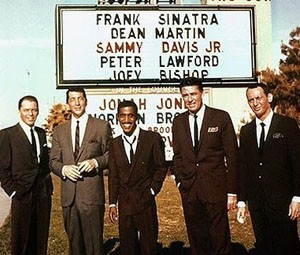Thanks for the replies.
Mu, foldable plugs (as mentioned by richardbd) seem to have closed down. I remember seeing then quite often at Heathrow and other airports.
What’s a rat pack, Santa 25-12? Other than:
I am a big fan of:
Eagle Creek packing cubes, especially their very lightweight Specter series. Cheaper copies are available. I picked up the habit of packing things away in bags (to keep things sorted out and together) from my father, who travelled around the world for Dunlop. As the packing cubes hadn’t been invented, he used bog standard plastic carrier bags in his suitcase. As he said, they also keep things dry when it inevitably rains and your case is sitting out on the tarmac somewhere.
The Anker tough cables and one multi-head ‘tough cable’ mentioned above. I also have a flat Anker multi-port charger, powerful enough to run a lap top (though I rarely take a lap top, other than on business trips and even then, I now rarely bother anymore) as I use an iPad or just my iPhone.
Whilst they are more bulky, I do like the very good quality Skross USB travel adaptors. I sacrifice a little weight and bulk, simply as they are so well made. Copies are available. Take care though, I did by one Chinese copy, which had open bare power ‘strips’ revealed when the pins were pushed forward A potential killer or at least a bloody painful jolt. I smashed it and chucked it in the bin.
Whenever possible, I remove any UK plug-in power leads, with their bulky UK three-pin plugs and replace the lead with a twin prong Continental version. Most devices use the standard ‘Figure of eight’ connection, so one lead will do the lot.
My iphone, it really does everything from a now pretty decent camera, through note book, email, library, calculator, clock, compass, GPS device…. Right down to….. well…a phone.
One Anker ‘power brick’ thing. I once had a breakdown in a very small French hamlet (me, a cat and four seemingly empty houses) , the pick-up truck taking a long time. The power brick kept my phone alive, whist I read my book, rearranged some hotels and waited. The long Anker power lead was also useful then, as I could put the power brick on the bench I was sitting on and still have the phone by my ear to make calls or on my lap to read my book. Anything to make life more comfortable and easier.
One or two old style paper maps. They weigh nothing and take up no space. They will get you out of trouble, if your sat nav has gone mad and your phone cracks its screen when you drop it or overheats in the sun. They are also good to show people to ask questions and engage in banter, much easier than trying to show someone a phone screen.
One Swiss Army knife, and one of those travel card things, with scissors, a torch, a little knife, a pin and whatever on them; both used many more times than any ‘Must have’ toolkit.
A few assorted safety pins. They will, at a push, hold most things together. Millions of mothers, using old style baby nappies, cannot all have been wrong.
Another tip I got from my father, is a small strip of rubber, cut out of a bicycle inner tube. I slot this into some shower head holders, to stop shonky showers spraying water in every direction but over me. I even cut off a small strip to stop my sat nav, popping out of its holder.
One wine bottle cork, sliced on the diagonal to make a wedge. Really good for balancing bloody wobbly tables. Stupidly, I most often forget this when going into a restaurant. I am going to keep it with the little bag which holds my wallet; the obvious has been right in front of my eyes for years. It has taken this post for me to think of it!
Anything that doubles up on the clothes front. You don’t have to look scruffy but you almost certainly won’t be meeting royalty. I draw the line at clumping about in motorcycle boots when off the bike; they are truly awful for anything other than riding a motorcycle. Merino wool is so good. Expensive yes but lasts if you looks after it with just a bit of basic care.
A simple twisted washing line. Use any soap to hand to wash things out.
As I am slowly but surely going back to the joys of camping (though the ground seems to be getting further and further away) I’ll deal with that separately.










